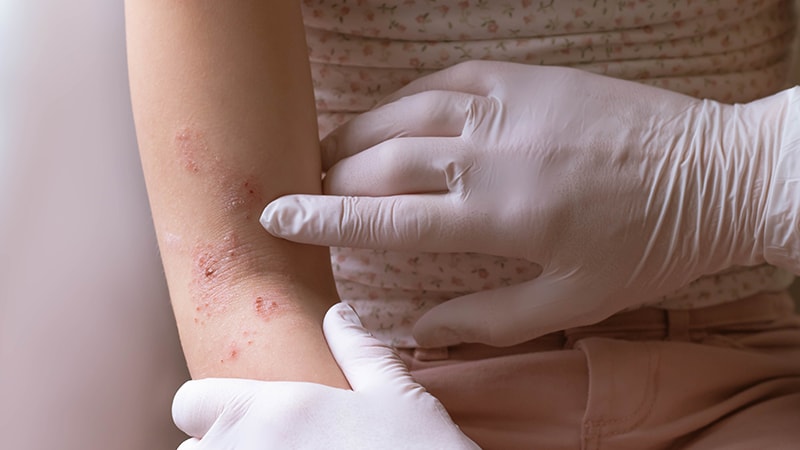Most children with chronic skin diseases — such as acne, alopecia, eczema, psoriasis, and vitiligo — experience mental health and social challenges related to their condition, which can include bullying and stigmatization, according to a new study.
In a study of children in Canada and the United States, 73% of participants with skin disease reported stigma, and stigma scores correlated strongly with lower quality of life, anxiety, and depression.
“The general burden of skin disease is sometimes difficult for people to appreciate, and even as dermatologists, we don’t always know how to ask questions about quality of life or how our perception correlates with the lived experience of patients and their caregivers,” study author Michele Ramien, MD, clinical associate professor of pediatric dermatology at the University of Calgary, pediatric dermatologist at Alberta Children’s Hospital in Calgary, Alberta, Canada, and president of the Canadian Dermatology Association, told Medscape Medical News.
“This study clearly shows, with validated instruments and tools, that there is a big burden and stigma associated with skin disease, and the experience of stigma is real,” she said. “It’s something we need to work on asking about more and addressing with patients.”
The study was published online on April 24 in JAMA Dermatology.
Skin Disease Stigmatization
Ramien and colleagues conducted a cross-sectional, single-visit study at 32 pediatric dermatology centers in Canada and the United States between 2018 and 2021, using the Patient-Reported Outcomes Measurement Instrumentation System Stigma-Skin to examine the links between disease visibility and severity and mental health and quality of life.
The study included 1671 children, of whom 58% were girls, and the mean age was nearly 14 years. About 56% of children self-reported high disease visibility, while 50.5% reported moderate disease severity.
Notably, the stigma scores significantly differed based on the physician-assessed and child- or caregiver-assessed disease visibility and severity. Nearly three quarters of children with skin disorders reported some amount of stigma. Stigma scores correlated strongly with reduced quality of life, depression, anxiety, and poor peer relationships.
“I was surprised that the correlation wasn’t better between child and physician,” said Ramien. “Although physicians may often feel like they have experience and empathy and understand the patient’s point of view, they might be completely wrong, based on what we’re seeing in the data about how patients feel regarding their skin condition.”
In addition, about 29% of parents said they were aware of their child being bullied, primarily at school, which was strongly associated with stigma. In general, girls reported more stigma than boys, and children with hyperhidrosis and hidradenitis suppurativa were more likely to have higher depression and anxiety scores.
“Some conditions didn’t have as much perceived stigma as we had thought, such as atopic dermatitis, while others had more than we thought, such as excessive sweating,” Ramien said. “That speaks to the disconnect in physician perceptions and serves as a reminder to ask children and families about their experience — and to find the best way to do that without making it burdensome or stigmatizing.”
Healthcare System Resources
When physicians ask about mental health challenges and quality of life, they may be better able to refer children and families to the care they need. For instance, specialized dermatology treatment may help decrease the severity and visibility of the skin condition, and mental health resources may help reduce stigma, false beliefs, and internalized perceptions.
“The shame aspect appears with some skin conditions, such as eczema, where kids may be embarrassed to be in a bathing suit and play with their friends because they’re afraid of being identified as different,” said Danielle Marcoux, MD, clinical professor of pediatric dermatology at the University of Montreal and Sainte-Justine University Medical Centre, Montreal, Quebec, Canada, and past president of the Canadian Dermatology Association.

“It’s important to look at these patient-reported outcomes during treatment because we want to avoid the consequences on child development, including self-esteem and other psychosocial impacts,” she said.
Marcoux, who wasn’t involved with the study, has researched chronic skin conditions and quality of life. She and colleagues found that cosmetic camouflage may help some children and teens with their self-perceptions. Even if some children only used the product once, they reported higher quality of life scores after several weeks of learning how to use the product, she said.
“That’s likely because they knew that if they wanted to, they could use it,” Marcoux said. “It’s about giving them tools to solve their problems and know that they can do something to decrease the weight or discrimination they face.”
Support networks are also helpful, Ramien said. With weeklong summer camps — such as Camp Liberté in Canada and Camp Discovery in the United States — children can meet each other, form friendships, and share helpful resources.
“I’ve attended the camps before and seen the connections and how they support each other,” she said. “Children can be each other’s greatest resources.”
At the same time, more work needs to be done to improve access to treatment, Marcoux said, particularly related to health insurance coverage and aspects of skin disease treatment considered merely “aesthetic.”
“For example, right now we have some medications for alopecia, but access can be extremely difficult and not recognized by some insurance companies,” she said. “The impact this can have on quality of life is extremely significant, and studies like these that measure patient-reported outcomes help to show how there’s more at stake than only the clinical findings.”
The study was funded by a grant from the Pediatric Dermatology Research Alliance, which is a research collaboration across North America. Ramien reported receiving personal fees from Sanofi, Eli Lilly, Pfizer, and Leo Pharma outside the submitted work. She volunteers as the Canadian Dermatology Association president, on the Camp Liberté board of directors, and on the Canadian Dermatology Foundation board of directors. Marcoux is the founder-president of Camp Liberté.
Carolyn Crist is a health and medical journalist who reports on the latest studies for Medscape Medical News, MDedge, and WebMD.
